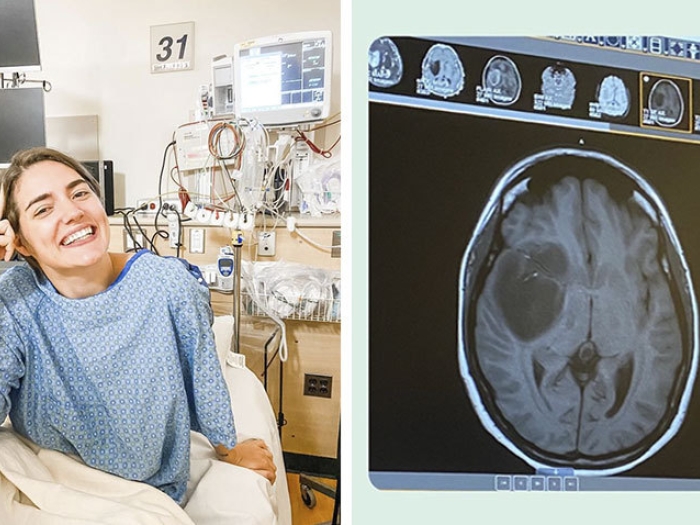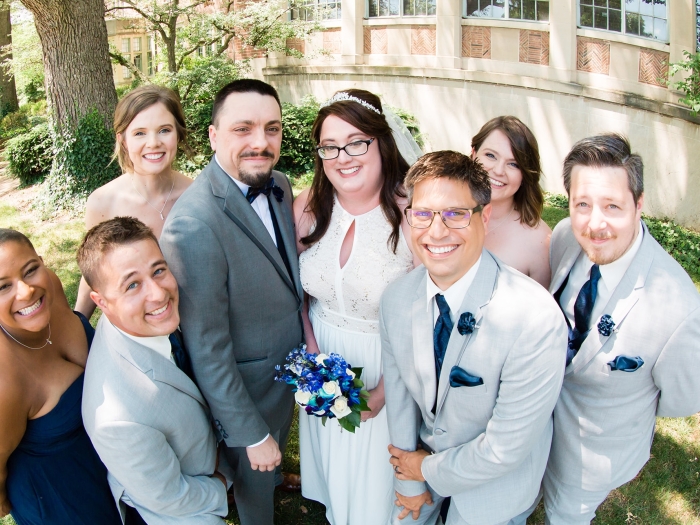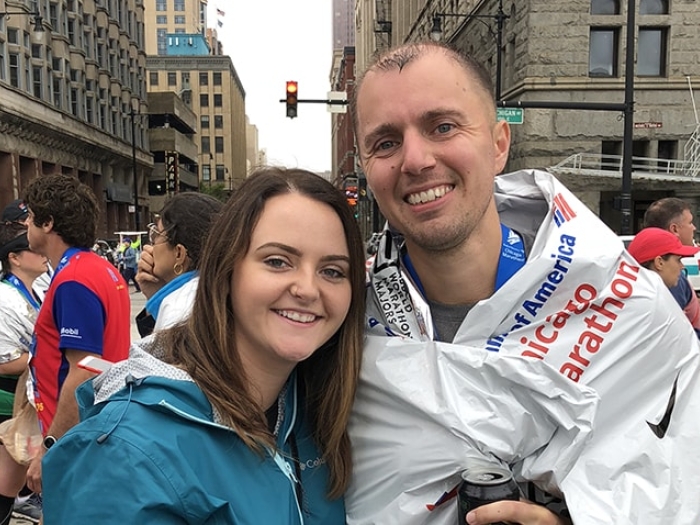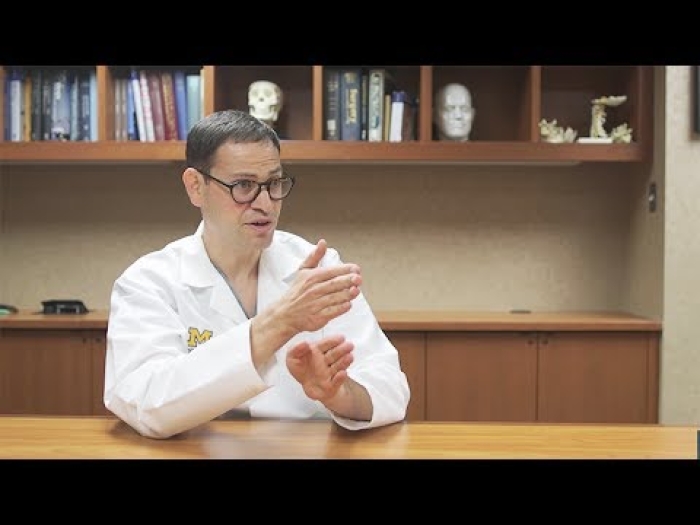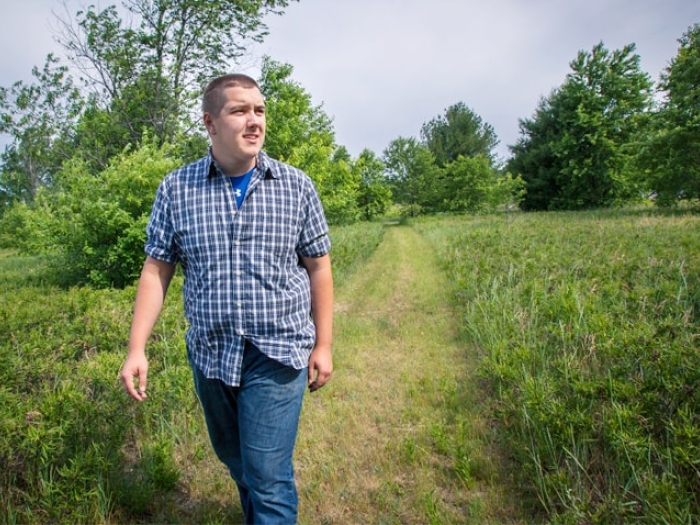Surgery for a rare brain tumor forced Drew Harm to put his college plans on hold.
11:00 AM
Author |
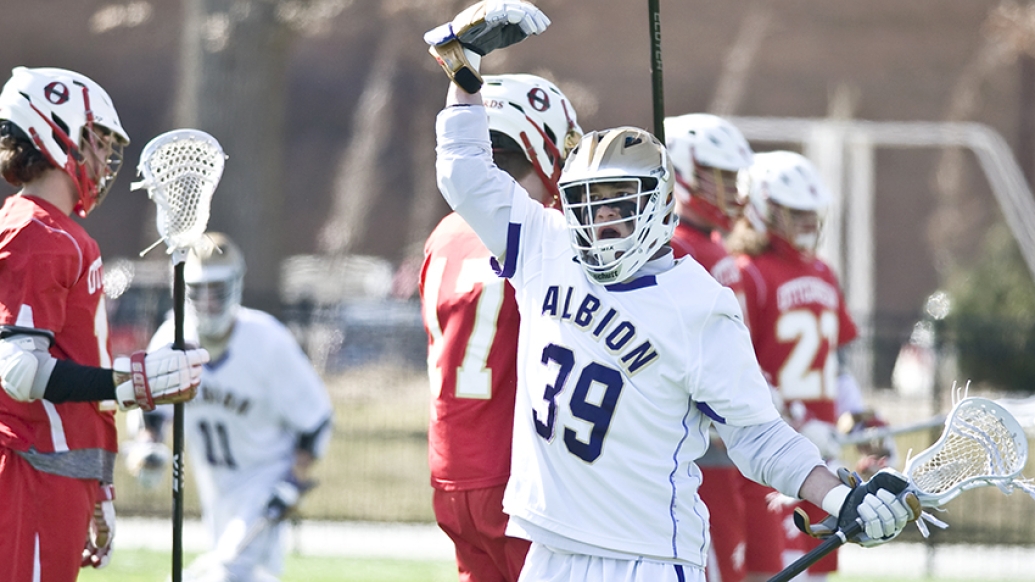
Drew Harm was back at school in January 2016, anticipating a new semester at Albion College and looking forward to the spring lacrosse season.
But the college sophomore would find the future of his education and lacrosse career in question when a sports-related accident led to the discovery of a rare type of brain tumor known as diffuse astrocytoma.
LISTEN UP: Add the new Michigan Medicine News Break to your Alexa-enabled device, or subscribe to our daily audio updates on iTunes, Google Play and Stitcher.
A diffuse astrocytoma is a slow-growing tumor that often occurs near areas of the brain that control body movement, language or vision. This type of tumor typically has boundaries that are not well defined, with small clusters of tumor cells infiltrating surrounding healthy tissue. As a result, during surgery — the cornerstone of treatment — some tumor cells can be left behind and continue to grow.
In addition to surgery, patients may be treated with chemotherapy and radiation, depending on the size and location of the tumor.
Incidental diagnosis
Symptoms of diffuse astrocytoma include loss of balance, headaches and seizures, although some patients have no symptoms and are diagnosed incidentally.
Harm was one such patient.
That January day, during one of the team's first practices of the season, a lacrosse ball hit the seemingly healthy 19-year-old on the back of the neck — a shot taken by his good friend and roommate.
Harm recalls losing feeling in his body as he lay on the ground, unable to move.
"I went down and felt a numbness throughout my body. It was a scary feeling," he says.
The young athlete was transported to an emergency room, where a CT scan revealed a mass on his brain.
MORE FROM MICHIGAN: Sign up for our weekly newsletter
"The doctors didn't think the mass required surgery, but they wanted to keep an eye on it to make sure it wasn't growing," says Harm, who was shocked by the diagnosis. For nearly two years, he underwent follow-up MRIs to ensure the tumor was stable.
But things changed in December 2017, when an MRI revealed the mass had grown. Although Harm remained symptom-free, his doctors were concerned.
That's when Harm and his parents, Michelle and Larry Harm of Rochester Hills, Michigan, began researching treatment options. Their research led them to Michigan Medicine and neurosurgeon Daniel Orringer, M.D.
Innovative treatment options
"Michigan Medicine has expertise in understanding the nature of this type of tumor," says Orringer, noting that it is rare and occurs mainly in young adults, often in their 30s and 40s. "U-M sees a concentration of these patients due to our expertise and innovative treatment options."
Harm's tumor, the size of a golf ball, was on the right side of his brain, near the motor system, which controls the body's voluntary and involuntary movements. "The patient may have begun to experience symptoms if the tumor had grown much larger," Orringer says, noting that a diffuse astrocytoma tumor can be life-threatening if it becomes malignant.
SEE ALSO: Positivity and Family Inspire Post-Brain Tumor Recovery
With this in mind, Orringer tells his patients that "the technical risk of surgery commonly increases as a tumor grows." But, he warns, "when we take the risk of surgery, there is a point of no return. This is the part where the decision becomes very difficult, especially for a young, otherwise healthy athlete.
"Drew had a difficult decision to make, and the stakes were high," Orringer says. "We spent a lot of time talking about his options: Wait until after his last semester of school and his last lacrosse season and risk the tumor growing substantially, or have the surgery sooner and possibly experience issues with movement or speech, which cannot be predicted."
The decision became clear during Harm's Christmas 2017 break from school.
"One day I woke up and said, 'I should take care of this now.'"
Orringer was in full support: "Drew made the best possible decision in light of an emotionally complex situation."
The surgery was scheduled for January 25. Although at peace with his decision, Harm had another difficult hurdle.
"I had to tell my coach and team I wouldn't return for the season," he says. "That was the toughest part for me."
Difficult decision
At the time of surgery, Orringer says, "we knew the tumor was close to the motor system, and we made every effort to preserve key brain structures adjacent to the tumor. We ultimately decided to access the tumor via an approach that we knew carried a risk of temporary weakness. It's difficult to make a decision like that, especially in an athlete whose motor function is so central to their identity."
After the 12-hour operation, Harm spent just one night in the hospital and experienced only minor issues during the weeks that followed.
"The mass was in an area that was controlling the left side of my body," Harm says. "My left side was compromised, but it eventually got better with therapy."
Therapy included innovative activities recommended by Harm's lacrosse coach.
"My parents put sticky notes on the walls of our house, and I would touch them as I made my way around the house. This helped me to rebuild the connection with my left side."
Going forward, Orringer says, "we'll follow Drew's tumor with MRIs every few months to make sure the tumor cavity remains stable. If additional treatment is needed, we'll discuss with Drew and his family." Treatment options could be oral chemotherapy or another surgery.
One-year anniversary
For now, the 22-year-old is anticipating the upcoming semester of school and lacrosse season as he nears the one-year anniversary of his surgery.
"It's amazing how much has happened this past year. I can't believe all the support that people have shown me," Harm says, thanking his Michigan Medicine care team, family, girlfriend and lacrosse team.
He's also keeping a positive outlook.
"Life throws you curveballs. We didn't expect this to happen, but you have to put your head down and push through the tough moments … to keep thinking that everything is going to be OK."
As for that friend whose accidental lacrosse shot led to the discovery of his tumor, Harm says, "I'm thankful for him every day."

Explore a variety of healthcare news & stories by visiting the Health Lab home page for more articles.

Department of Communication at Michigan Medicine
Want top health & research news weekly? Sign up for Health Lab’s newsletters today!
